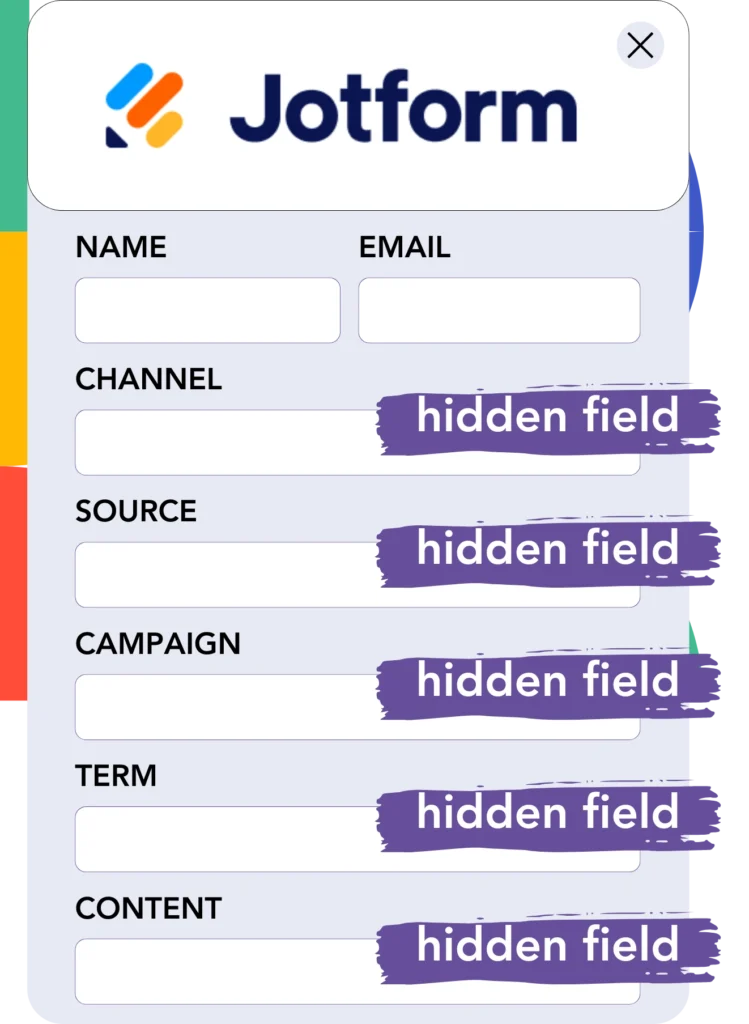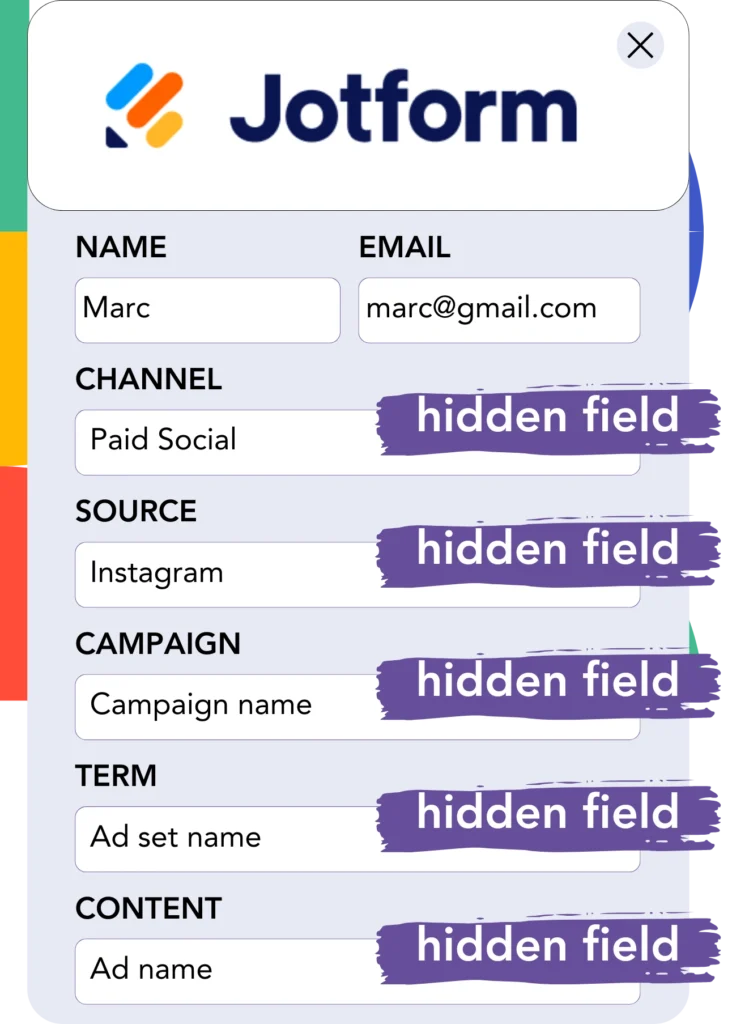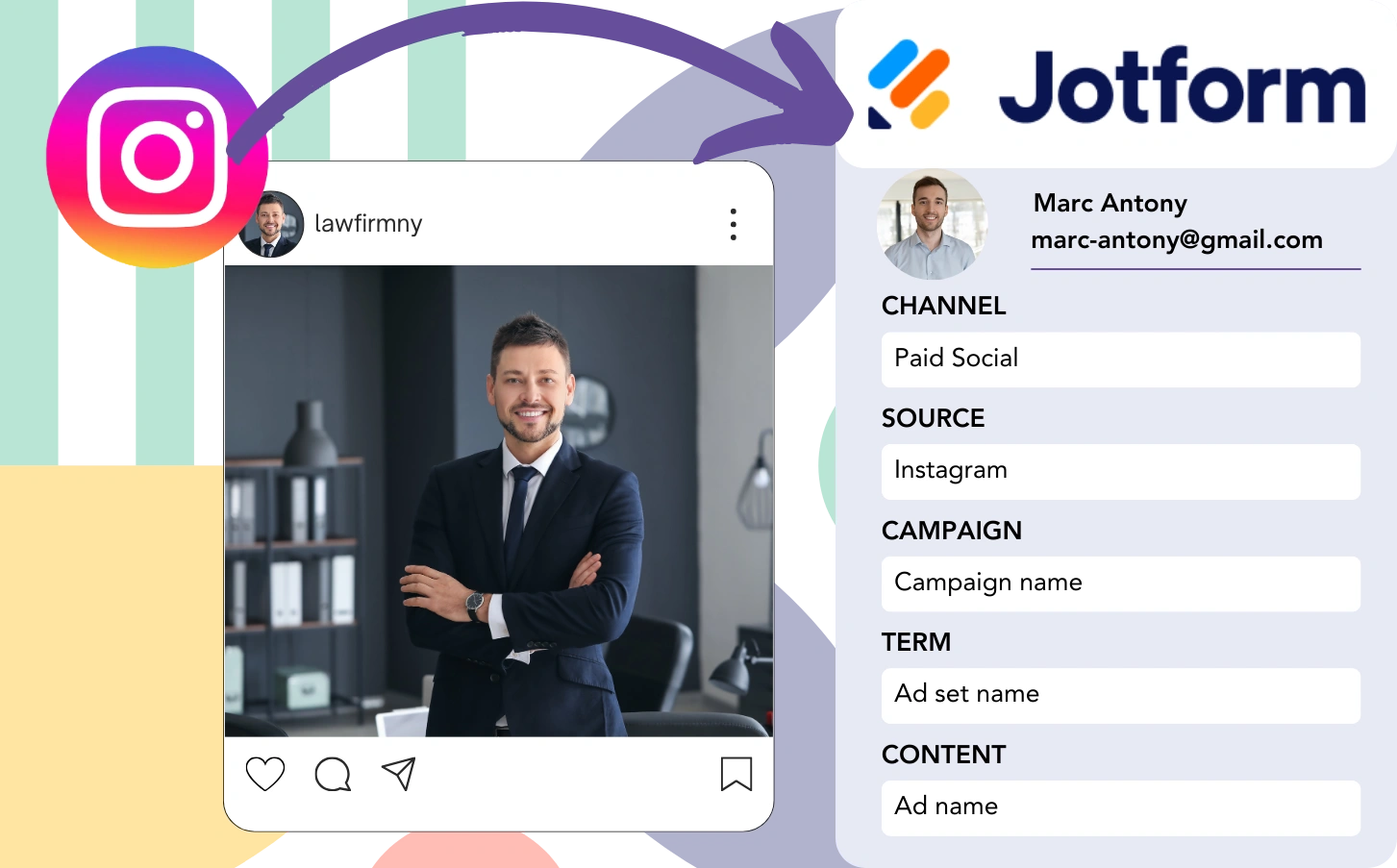Jotform helps in generating leads from Instagram; however, connecting each lead to the ad that brought it in is not feasible. Likewise, if a lead converts to a customer, there’s no way to connect them back to the particular Instagram ad.
This lack of tracking makes it hard to measure the success of your Instagram ads, leaving you guessing which ads produce leads and customers. Consequently, you allocate budget across various ads without knowing which are effective.
There’s a practical way to trace each lead back to the exact Instagram campaign, ad set, and ad that produced it.
We’ll go over it step by step!
How to track Instagram ads in Jotform
Step 1: Add Leadsources in the head tag of your website

Leadsources offers a simple way to track lead sources. After being added to your website, it captures up to 7 pieces of source information for each lead.
➡️ Sign up to Leadsources.io for free
➡️ Add the Leadsources tracking code to your site
Step 2: Add the UTM parameters to your Instagram ads

In your ad URL, use UTM parameters to monitor Instagram campaign, ad set, and ad data. Here’s an example you can follow:
UTM_medium=paidsocialUTM_source=instagramUTM_campaign=campaign-nameUTM_term=ad-set-nameUTM_content=ad-name
The URL in its final form should look like this:
https://www.yourdomain.com?UTM_medium=paidsocial&UTM_source=instagram&UTM_campaign=campaign-name&UTM_term=ad-set-name&UTM_content=ad-nameNote: Leadsources collects comprehensive lead source data, even in the absence of UTM parameters, ensuring each lead is tracked.
Step 3: Add the hidden fields in Jotform

Hidden fields are parts of a form that users can’t see, but they still hold information that gets sent when the form is submitted.
When someone submits your Jotform, Leadsources instantly populates the hidden fields with data from Instagram ads. After that, Leadsources saves the Instagram ads data directly into your Jotform.
Step 4: Capture the Instagram ads data in Jotform

When users click on your advertisements and reach your website, Leadsources fetches the Instagram campaign, ad set, ad data, and additional details.
Leadsources populates the hidden fields of Jotform with the relevant Instagram ads data.
As a result, when the form is submitted, you will be able to see the Instagram ad data and the details of the lead in Jotform.
How does Leadsources work?
Every time someone lands on your site, Leadsources fetches Instagram ad data and populates it into the hidden fields of your form. When the form gets submitted, this data, along with lead details such as name and email, is sent to Jotform.
Leadsources tracks all of this source data associated with each lead:
| Lead source data | Fetched automatically |
| Channel | ✅ |
| Source | ✅ |
| Campaign | ✅ OR use UTM_campaign |
| Content | UTM_content parameter is required |
| Term | UTM_term parameter is required |
| Landing page | ✅ |
| Landing page subfolder | ✅ |
As outlined in the table above, when UTM parameters aren’t applicable—such as with organic sources like Google search or referrals—Leadsources still retains some lead source data:
- Channel
- Source
- Campaign
- Landing page
- Landing page subfolder
Unlike competing tools, Leadsources records lead sources across every marketing channel, both organic and paid.
Performance reports: Lead, sales, and revenue by source
By analyzing Instagram ad data in Jotform, you can generate performance reports that highlight:
- Leads, sales, and revenue by channel
- Leads, sales, and revenue by source
- Leads, sales, and revenue by campaign (aka. Instagram campaign)
- Leads, sales, and revenue by term (aka. Instagram ad set)
- Leads, sales, and revenue by content (aka. Instagram ad)
This permits you to refine your Instagram budget according to the campaigns, ad sets, and ads that produce the greatest leads, sales, and revenue.
Let’s discuss some of the reports available for you to create:
1. Lead source reports
Prepare performance reports that reveal the number of leads sourced from:
- Channel
- Source
- Campaign (aka. Instagram campaign)
- Term (aka. Instagram ad set)
- Content (aka. Instagram ad)
- Landing page
- Landing page subfolder
Example #1: Leads by channel
This report assists you in recognizing the channel that brings in the most leads.

Example #2: Leads by Instagram campaign
You can now emphasize to a specific lead source (e.g., Instagram) and evaluate the number of leads created by each Instagram campaign.

Example #3: Leads by Instagram ad
After recognizing the Instagram campaign that drives the highest lead count, you can analyze which ad set or specific ad is generating those leads.

2. Sales and revenue source reports
Now that we know which Instagram campaign, ad set, and ad are attracting our leads, we must assess if these leads are resulting in sales and revenue.
To meet this objective, link your leads to a CRM like GoHighLevel. This enables tracking of sales and revenue across multiple channels, sources, Instagram campaigns, ad sets, ads, landing pages, and landing page subfolders.
With these insights, you can adjust your Instagram ad strategy to highlight the channels, sources, campaigns, ad sets, and ads that result in the highest sales and revenue.
There are several sales and revenue reports you can create, such as:
- Sales and revenue by channel
- Sales and revenue by source
- Sales and revenue by campaign
- Sales and revenue by term (e.g., Instagram ad set)
- Sales and revenue by content (e.g., Instagram ad)
- Sales and revenue by landing page
- Sales and revenue by landing page subfolder
Example Scenario:
| Channel | Search Paid | Social Paid |
|---|---|---|
| Leads | 50 | 75 |
| Sales | 5 | 6 |
| Average Order Value | $150 | $100 |
| Revenue | $750 | $600 |
Upon launching ads on Google and Instagram, the early “Leads by Channel” report indicated that Social Paid ads (Instagram) brought in more leads than Search Paid ads.
Nonetheless, after assessing the sales and revenue information in your CRM, you discovered that the Search Paid channel yielded more revenue while generating fewer leads than the Social Paid channel. Considering this, you reallocated your budget to enhance spending on the Search Paid channel.
LeadSources tracks the source of each lead in Jotform, whether they come from ads, organic search, social, email, etc. and syncs that data with each submission. See the full breakdown on the lead source in Jotform page.

